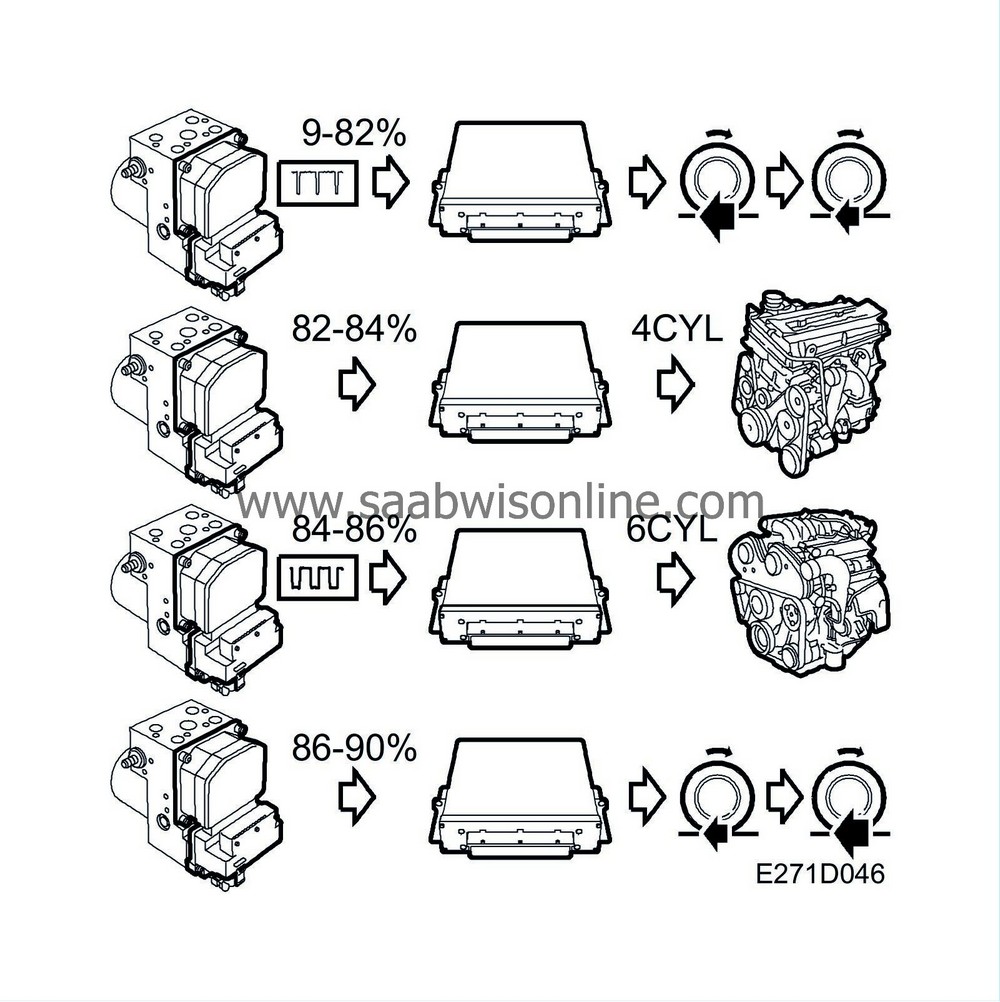Engine torque limitation
| Engine torque limitation |

The TC/ABS control module sends a torque limitation signal to the Trionic. The signal is a 100 Hz PWM and goes out from pin 13 of the control module.
The different pulse ratios have the following meanings:
| Pulse ratio [%] | Signification of the signal |
|
9-82 %
|
To limit the engine torque between 0 Nm and 350 Nm. Trionic converts Nm to mg air/combustion. The value constitutes the maximum air mass/combustion that the TC/ABS control module allows when TCS is active and wheel spin exceeds the permitted limit.
|
|
82-84 %
|
No slip and TC/ABS control module programmed for 4-cylinder engine.
|
|
84-86 %
|
No slip and TC/ABS control module programmed for 6-cylinder engine.
|
|
86-88 %
|
Increase torque to 0 Nm. Sent when slip occurs in connection with engine braking and the vehicle speed exceeds 25 km/h (15.5 mph). The vehicle speed and amount of slip determine whether the control module selects 0 Nm or 10 Nm. If the slip is low, 0 Nm is selected and if it is high, 10 Nm is selected.
|
|
88-90 %
|
Increase torque to 10 Nm. Sent when slip occurs in connection with engine braking and the vehicle speed exceeds 25 km/h (15.5 mph). The vehicle speed and amount of slip determine whether the control module selects 0 Nm or 10 Nm. If the slip is low, 0 Nm is selected and if it is high, 10 Nm is selected.
|



